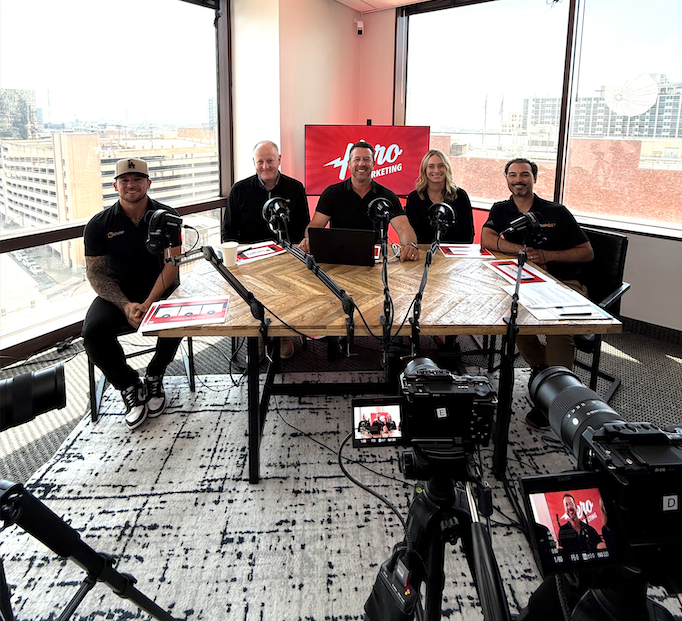Patience, Perception, Pressure: How to Utilize Time
Every success, in every area, has one thing in common: amazing timing.

Every success, in every area, has one thing in common: amazing timing.
The innovative startups that seem to make billions overnight? Their launch was timed perfectly to the market’s demand. The people that arise from nowhere, yet win over the public? Their unconventional ways enter the spotlight just when the public begins to disdain convention. The centuries-old household name brands? Grand compilations of patience, well-timed actions, and defensive, long-term strategy. It’s time that your business joined the ranks and mastered the art of timing.
This article is part of a 4-part series based on concepts from The 48 Laws of Power by Robert Greene. If you haven’t given it a read yet, we’d highly recommend it. It’s linked at the end, along with the other parts of the series.
Let’s get started.
TIME: WHAT IS IT; HOW CAN YOU USE IT?
When you learn how to time, you must learn the right way to think about time. Time is not just numbers and pure objectivity, nor is it as rigid or as predictable as we like to believe.
“Time is an artificial concept that we ourselves have created to make the limitlessness of eternity and the universe more bearable, more human. Since we have constructed the concept of time, we are also able to mold it to some degree, to play tricks with it...[Time] depends on perception, which, we know, can be willfully altered.
— Greene
The distortion of time is a double-edged sword. We can use it as a tool to influence people, but these same distortions can be used to spur us into poor, emotional decision-making if we aren’t careful. This means that strong emotional control is one of the pillars of great timing.
“If the inner turmoil caused by our emotions tends to make time move faster, it follows that once we control our emotional responses to events, time will move much more slowly. This altered way of dealing with things tends to lengthen our perception of future time, opens up possibilities that fear and anger close off, and allows us the patience that is the principal requirement in the art of timing.
— Greene
Do not learn how to adjust your trajectory or “think on your feet” until you’re successful at planning. If you can’t set a structured, long-term goal and achieve it; if you haven’t mastered your emotions to the caliber of long-term achievement, it’s far too easy to be led astray in the short term. Your emotions will manipulate the timeline; your decisions will lead you in many different directions at once.

Our rule of thumb is to treat everything like a game of chess. Think rationally, predict your opponent’s moves, and ensure you can visualize the checkmate before you even consider picking up a piece.
There are three main types of time that we must plan through: long time, the defensive, patient waiting game; forced time, the shorter periods that we manipulate to jar our competitors and customers; and end time, the bold move we make at just the right moment, without hesitation.
LONG TIME: THE WAITING GAME
If you want to succeed at anything, patience is mandatory.
When you choose to rush the pace, or try and force opportunities that are not yet ripe, you end up creating problems rather than solving them quicker. Companies that churn and burn their customers with spam emails may get some quick revenue, but at what cost?
Recognize when it’s best to step back and play defensively. Give your leads time to warm up to your brand before you begin pushing a sale. It’s far better to focus on the quality of each message than on the number of messages; this is why IgnitePOST’s handwriting services are so popular. Instead of relying on mass emails to prompt quick action, our clients send automated handwritten notes to build strong customer relationships and ensure high loyalty.
When you lay off the gas for a bit, resisting the temptation to rush, you’ll notice that time starts to stretch out in front of you. It’s magical. You begin to feel comfortable making decisions one at a time and find it easier to be flexible. New pathways will appear out of nowhere once you can zoom out to see the whole game board.
In long time, your top priority should be consistency. Keep your eyes on the prize and do not stray from your path. A clear head and consistent trajectory is the best position you can place yourself in to snatch up opportunities in the future.
FORCED TIME: DISTORT THEIR PERCEPTION
A watched kettle never boils. Month-long vacations seem to be over in days. Why?
You’ve probably seen sales pages with big, red countdown timers, limited-time offers, or heard about companies that make you wait a month or two to buy something. All of these experiences have one thing in common: Our perception of time is distorted.
As Greene says, time can easily be manipulated. Abrupt changes in pace, sudden events, delayed promises, and monotony can cause years to pass in a moment and hours to stretch into days. Understand how to change others’ perception of time, and you open up scores of opportunities for your business.
Marketers and salespeople use a ton of tactics to distort a customer’s perception of time; they all create a sharp contrast in the speed of events. So, either begin your interactions at a slower pace, then rush your customers, or start at a faster pace, then make them wait. If you know your customer well, you can save resources by working within their lifestyle. Late-night infomercials sell with high pressure and a fast pace for a reason. Companies know that the people watching them aren’t doing much, so time passes slowly until the ad comes on; then time suddenly kicks into high gear for the viewer. The advertisement only has to provide a rush to create the same effect. The reverse also works; if you can catch a customer at a hectic point in their day and make them wait, you can stretch minutes into hours and swell up their desire to act.

Forced time is not used to force people to do things. It simply changes their perspective on the situation at hand, to one that favors what you want. This is the purpose of all marketing and sales. Success and loyalty are inevitable when your customers start to view you from the right angle. Help them find it.
END TIME: STRIKE BOLDLY
Timing is a multiplier, not an additive, to your actions.
We mean that while great timing will do wonders for your results, even perfect timing cannot fix poor execution. Timing may take an action’s effectiveness from 4 to 8, but a 0 will stay a 0, and a 1 can only get to a 2. Build a base with great execution so the timing will be able to work its magic. How should you improve your execution? Boldness.
Most people believe that being bold is somehow bad or overly aggressive. This is a mistake. Boldness will help you far more than timidity, especially when your customers have money on the line. We’d go as far as to say it’s better to be too bold than not enough. Remember: Customers are wary of trusting you at first. They know that you are, after all, a for-profit business, and they’re the ones buying. Boldness and assertiveness crash through our defenses. They provide a clear, strict path for customers to follow, removing the anxiety of choice. The confidence that underlies boldness also assures customers that you are capable and that you know what is best for them. If you make requests timidly instead, you show uncertainty in what you’re saying. You’ll also probably give your customers too many options. Your customers will pick up on this and immediately become skeptical.
So, assuming you are capable of following through on your promises, make bold claims. Speak with conviction when you call customers to action. Not only will you appear authoritative and trustworthy, but you will stand out from the majority of businesses that are too timid to give clear instructions, and too afraid to be confident in their abilities.
Act as the chief, and customers will gladly follow your lead.
LEARN WHEN TO STOP

When you step onto the subway, it’s almost certain that you have an end destination in mind. You chose a train and boarded it; now you wait until it reaches your stop, but when you get there, you don’t stay on the train. You get out and walk around, and get back on the train only if you discover you need to keep going. But most of the time, you’ll either swap trains or leave the station entirely.
In business, it is the same.
You pick an end destination, then reverse-engineer it into a journey of goals that will take you there. You plan the best route from A to B, not from B onwards. So, when you reach point B, you must find your next point B—your next big goal—rather than blindly continuing in the same direction.
So, whenever you reach a milestone or pass a major goal you’ve set, stop. Get off the train and look around. Revisit the maps and rethink your tactics. Circumstances are ever-changing; your tactics and goals should constantly adapt to your current situation.
No matter the strategy, team, experience, or current situation, the business which masters the art of timing will always win in the end.
We hope that it will be you.
LINKS
Attention is Everything: Winning the Crowd With Great Publicity
Stand Out From the Rest: Creating a Great Reputation
Status, Dependency, Friendship: Fostering Lifetime Loyalty
Read more insights
-min.png)
Get expert insights for real mail campaigns
Everything you need to launch, run and scale handwritten card mail campaigns. Subscribe today!
































Ready to create your first magic moment?🚀
Start using IgnitePOST today. It's free to signup!
No contracts, no commitment and unbelievable support.
.svg)







.png)